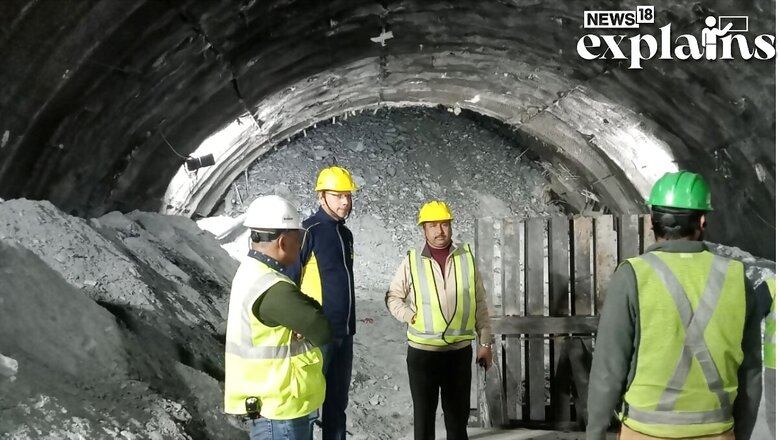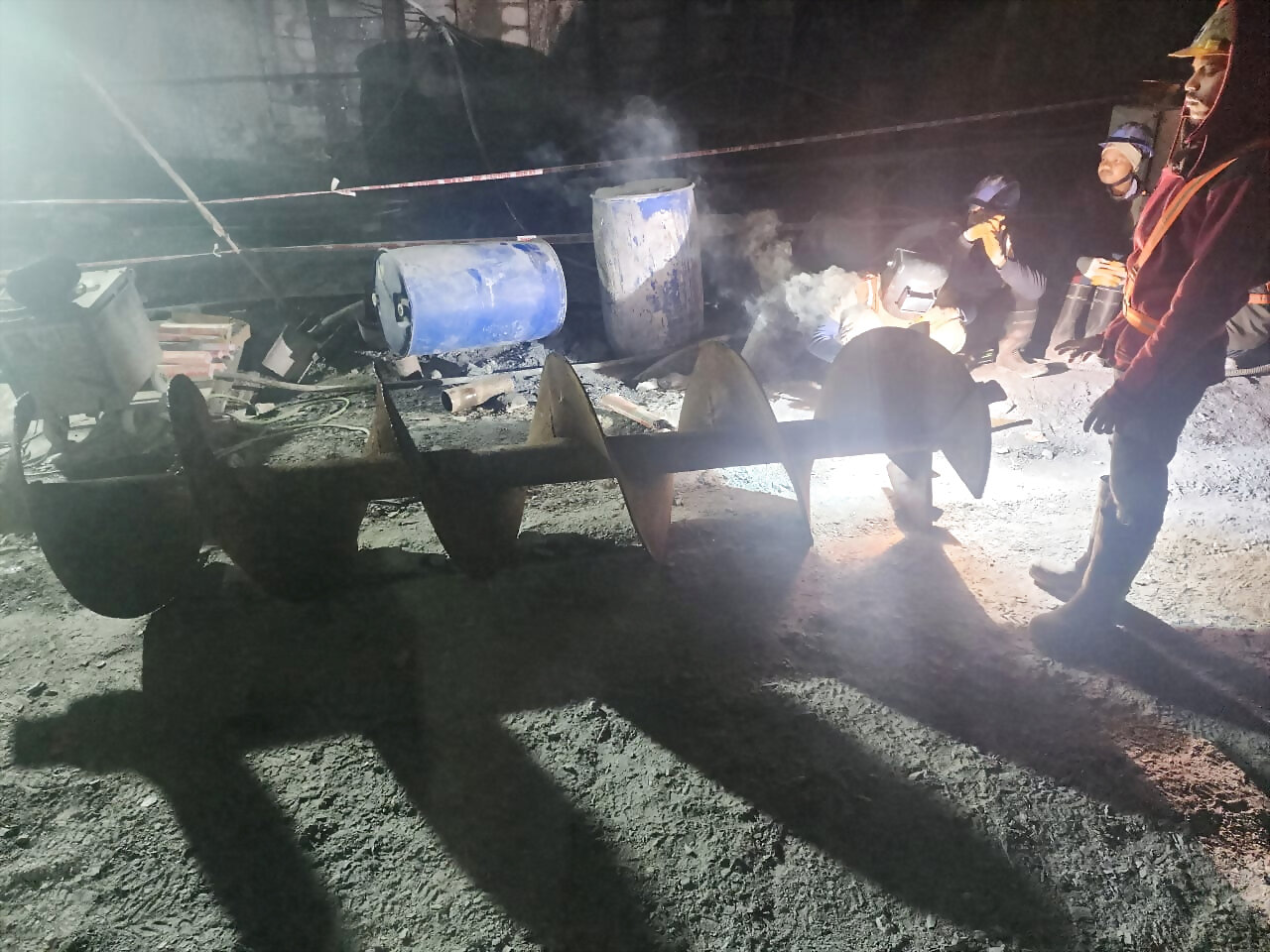
views
Rescue operations are underway on the third day to evacuate 40 workers trapped inside a collapsed tunnel in Uttarakhand. Excavators have been removing debris for two days and cutting down the rocks to make a way to reach the workers, who have been trapped in the tunnel since Sunday morning.
The workers, from states including Jharkhand, UP, Orissa, Bihar and other states are being provided with food, medicines, and other essential supplies. Trucks carrying pipes have arrived to create a platform for drilling and inserting metal pipes to reach the trapped workers.
How Did the Incident Unfold?
The incident unfolded after an under-construction tunnel built between Silkyara and Dandalgaon on the Brahmakhal-Yamunotri National Highway in the Uttarkashi district collapsed trapping 40 workers inside.
There were around 50 or 60 workers inside the tunnel and around 10 or 20 of them got out after their shift ended as they were closer to the exit and the rest were trapped after the collapse.

The collapsed area is spread over 30 metres and located 270 metres inside the tunnel from the Sikyara side. The tunnel, supposed to be 4,531 metres long when ready, is already built 2,340 metres from Silkyara side and 1,750 metres from Barkot side.
What is the Government Doing?
Uttarakhand Chief Minister Pushkar Singh Dhami visited the tunnel site on Monday to check the rescue operations being carried out and inspected the site along with officials. He said he is closely monitoring the situation and informed that food, water and oxygen are being supplied to the people trapped inside.
The trapped workers are being sent dry food items and essential commodities through pipes. Medical experts say that the labourers, who have been stuck for more than 48 hours, are confronting both physical and physiological challenges.
How is the Rescue Happening?
The rescuers plan to create an escape passage by inserting a large-diameter mild steel pipes through the rubble and create an escape passage for the trapped workers.
As per reports, the rescuers have already initiated the process of inserting large-diameter steel pipes of a diameter of 900 mm through the rubble using an auger machine to rescue the workers.
The pipes will be pushed in using the horizontal drilling equipment called an auger machine to create an escape passage for the workers. Officials said around 21 metres of slab blocking the tunnel has been removed and a 19 metres passage is yet to be cleared. A platform is being prepared for an auger machine to drill horizontally and push the pipes through the debris and evacuate the workers.
Disaster Management Secretary Ranjit Kumar Sinha said authorities have set a target of rescuing the trapped labourers by Tuesday night or Wednesday.
What is an Auger Machine?
Auger tunnel boring machines are used to install piping underneath roadways, tunnels and other infrastructure. Auger boring can be used to install pipes and casings in mining lengths up to about 500 feet and diameters up to about 60 inches.
It uses a revolving cutting head that is located at the leading end of an auger string. The auger is laid into a launch pit on tracks and is slowly pushed through the ground by the machine.
Tunnelling in Fragile Himalayas a Risk
The collapse of the Silkyara tunnel has reignited concerns among environmentalists and the scientific community about the devastating impact of extensive construction in an area, which is prone to landslides.
The region is prone to landslides, earthquakes and floods and the incident follows events of land subsidence in the state that geologists, residents and officials have blamed on rapid construction in the mountains.
Scientists and academicians have said that the Silkyara tunnel is being built in an area comprising limerock, a sedimentary rock, making it prone to recurrent collapses.
According to Geologist SP, tunnelling in such areas is only effective when all protocols are strictly adhered to. However, in the case of Uttarkashi, there are only two potential reasons for this collapse: blind shear zone, thin zone within the Earth’s crust or upper mantle that has been strongly deformed, and the use of explosives for tunnelling.
In the landslide-zone map presented by ISRO, Rudraprayag district has been shown to be very vulnerable to disasters but the government has not taken any steps towards reducing them, former advisor to the State Planning Commission, Harshapati Uniyal, said.


















Comments
0 comment